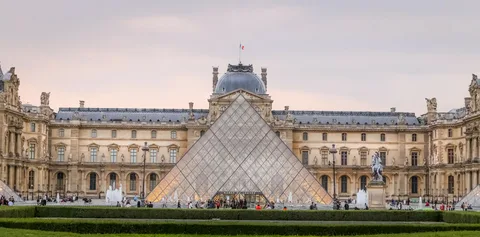Introduction
The Louvre Museum in Paris is one of the most iconic cultural landmarks in the world. Home to masterpieces like the Mona Lisa and the Venus de Milo, it attracts millions of visitors every year. But beneath its grand architecture and rich artistic heritage lies a fascinating tale that continues to stir curiosity — the story of the Louvre Museum robbery. While the Louvre is known for its tight security, it hasn’t been completely immune to theft. The most talked-about incident in its history dates back over a century, yet it still captures the imagination of art lovers and crime enthusiasts alike.
The Theft of the Mona Lisa: A Heist That Shocked the World
The most notorious robbery in the Louvre’s history occurred on August 21, 1911, when the world’s most famous painting, the Mona Lisa, disappeared from its frame. The painting, created by Leonardo da Vinci in the early 16th century, was stolen by an Italian handyman named Vincenzo Peruggia. He believed that the masterpiece belonged in Italy and should not be housed in a French museum.
Peruggia had previously worked at the Louvre and was familiar with its layout and security procedures. On the day of the theft, he hid inside the museum overnight and, dressed in a white smock like other museum workers, walked out with the painting hidden under his clothes the next morning. The theft went unnoticed until the following day, sending shockwaves through the art world.
A Global Sensation and a Mysterious Investigation
The disappearance of the Mona Lisa created an international sensation. Newspapers around the world reported the story with headlines filled with mystery and speculation. The museum closed for an entire week, and police launched an intensive investigation. Famous artists and writers, including Pablo Picasso and Guillaume Apollinaire, were even questioned in connection to the crime.
Despite the efforts of law enforcement, the case remained unsolved for over two years. Peruggia had kept the painting hidden in a trunk in his Paris apartment. Eventually, in 1913, he attempted to return the painting to Italy by contacting an art dealer in Florence. The dealer, suspecting something was wrong, informed the authorities. Peruggia was arrested, and the Mona Lisa was returned to the Louvre, where it remains today behind bulletproof glass.
Why the Robbery Still Matters Today
Though it occurred over a century ago, the theft of the Mona Lisa changed how the world viewed art and security. Before the robbery, the painting was not the global icon it is today. Ironically, the heist helped catapult the Mona Lisa into international fame. People became fascinated not just by the artwork, but by the story behind its disappearance and recovery.
The robbery also forced museums around the world to rethink their security measures. The Louvre significantly upgraded its protection protocols, and the incident set a precedent for how to safeguard cultural treasures. Today, with advancements in surveillance technology and increased awareness of art crime, such a theft would be far more difficult to pull off.
Other Thefts and Security Challenges at the Louvre
While the Mona Lisa theft remains the most famous, the Louvre has faced other security challenges over the years. However, no major robbery of that magnitude has occurred since. The museum has invested heavily in modern security systems, including motion detectors, cameras, and a strong police presence. These measures have successfully deterred criminal activity and protected its priceless collection.
The Louvre’s security team works closely with international law enforcement and art recovery organizations to monitor threats and prevent future thefts. The legacy of the 1911 robbery has ensured that the museum remains on high alert, protecting the integrity of its exhibits and the safety of its visitors.
Lessons Learned from the Louvre Museum Robbery
The Louvre Museum robbery serves as a powerful reminder of how vulnerable even the most secure institutions can be. It also highlights the emotional and cultural value of art, which can inspire acts of passion, protest, and even crime. Museums today not only serve as guardians of history but also must navigate the complexities of protecting these treasures from modern threats.
For art institutions and collectors, the story of the Mona Lisa theft underscores the importance of thorough security planning, staff training, and public engagement. By sharing stories of past robberies and recoveries, museums can educate the public while building a deeper appreciation for the preservation of cultural heritage.
Conclusion
The story of the Louvre Museum robbery is more than just a tale of a stolen painting. It’s a narrative that blends history, intrigue, and cultural identity. Vincenzo Peruggia’s theft of the Mona Lisa may have been an act of misguided patriotism, but it forever changed the world of art. Today, the painting draws millions of visitors each year, many of whom are drawn as much by its mysterious past as by its artistic beauty.
As we continue to explore the importance of art in society, the Louvre robbery remains a compelling chapter in the history of crime and culture. It’s a story that proves how even in theft, art has the power to move the world.













Comments are closed